-
Countries
-
Data and Analysis
-
Special Focus
-
Crisis Responses
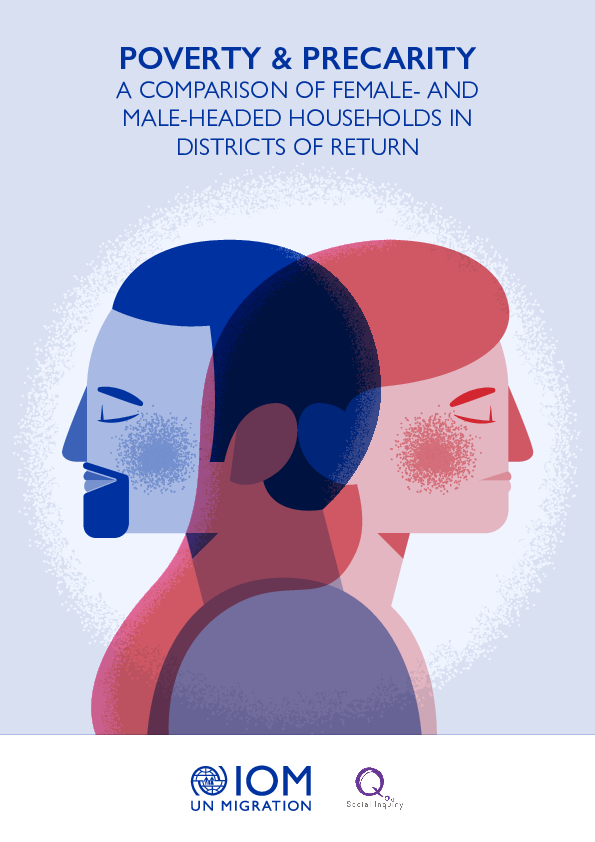
Contact
DTM Iraq, IraqDTM@iom.int
Language
English
Location
Iraq
Period Covered
Mar 01 2022
Apr 30 2022
Activity
- Survey
- Return Intention
This brief is part of a larger research project, Reimagining Reintegration, carried out by IOM Iraq and Social Inquiry, that explores the sustainability of returns across 14 districts hosting the largest shares of returnees in the country. These are, in descending order of returns, Mosul, Ramadi, Falluja, Telafar, Tikrit, Heet, Hawija, Hamdaniya, Shirqat, Kirkuk, Baiji, Sinjar, Khanaqin, and Balad. The findings presented here are drawn from an original household survey and roster of 2,260 returnee respondents in these districts collected between March and April 2022. The survey included a household module (applicable to the overall household situation), a personal module (gathering perceptions of the respondent), and a roster module (collecting personal characteristics of each household member), covering topics related to demographics, displacement and conflict history, safety and security, adequate standards of living, livelihoods and economic conditions, housing condition/restitution and tenure security, civil documentation, social cohesion and public participation, and remedies and justice. The outputs of this project also include an analysis of sustainable reintegration in districts of return and another brief on the impacts of conflict, climate change and the economy on agriculture in districts of return
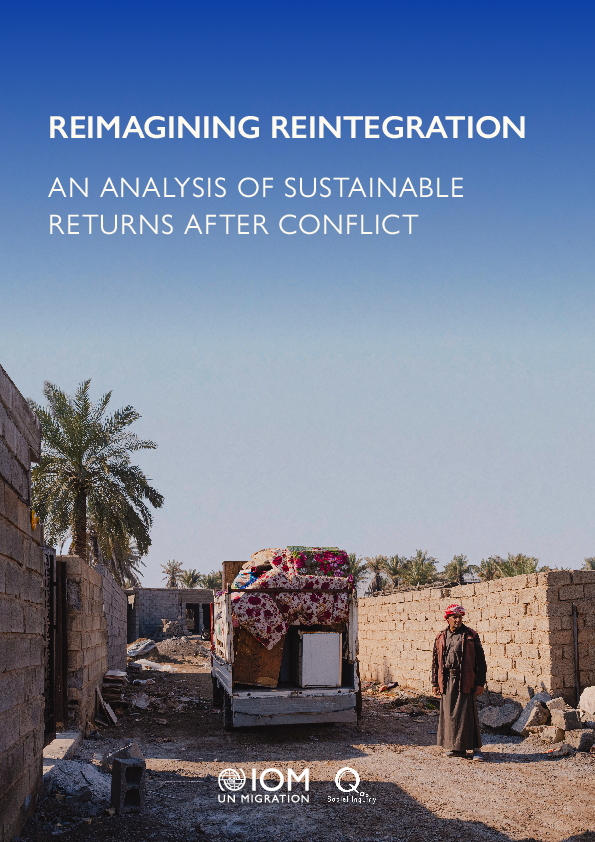
Contact
DTM Iraq, IraqDTM@iom.int
Language
English
Location
Iraq
Snapshot Date
Mar 22 2022
Activity
- Survey
- Return Intention
- Mobility Tracking
- Baseline Assessment
This report presents an overview of reintegration of returnees across the top 14 districts with the largest number of returnees; altogether, they represent more than 80% of the almost 5 million returnees that IOM’s Displacement Tracking Matrix estimated in March 20221 . This research was designed to obtain a statistically representative sample of the returnee population in each district with at most a 10% margin of error within a 95% confidence interval.

Contact
DTM Iraq, IraqDTM@iom.int
Language
English
Location
Iraq
Snapshot Date
Dec 30 2022
Activity
- Survey
- Return Intention
- Mobility Tracking
- Baseline Assessment
In February 2021, IOM Iraq, the Returns Working Group and Social Inquiry produced a report,Home Again?. The report analyzed the sustainability of reintegration of Iraqi families who had returned to their area of origin after being displaced due to the ISIL conflict. In line with the durable solutions framework developed by the Expert Group on Refugee and IDP Statistics (EGRIS), the report examined the extent to which sustainable reintegration had taken place across five areas.9 The study found that the main challenges to reintegration relate to housing, land and property (HLP); safety, security and social relations; and access to livelihoods and economic security. In 2021, IOM published a report and set of district profiles related to HLP, as well as a report focused on safety, security and social relations. Taken together, this series of reintegration reports – including this report focused on livelihoods and economic security – provides a comprehensive evidence base in support of the advancement towards sustainable reintegration for the 825,372 returnee families across the country.
The objective of this report is to strengthen the evidence-base related to the types of reintegration challenges related to livelihoods and economic security that returnees face across the country. The analysis is structured around the two relevant sub-criteria from the EGRIS framework, as follows: Livelihoods and employment and Economic Security.
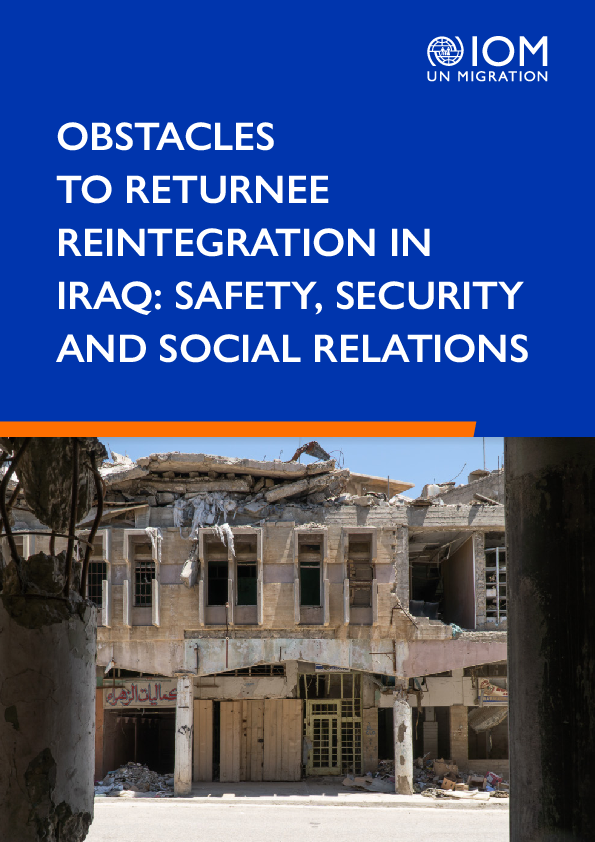
Contact
DTM Iraq, IraqDTM@iom.int
Language
English
Location
Iraq
Period Covered
Oct 01 2020
Sep 30 2021
Activity
- Survey
- Return Intention
- Mobility Tracking
- Baseline Assessment
In February 2021, IOM Iraq, the Returns Working Group and Social Inquiry produced a report, Home Again? Categorising Obstacles to Returnee Reintegration in Iraq. It analyzed the sustainability of reintegration for families who had returned to their area of origin after being displaced due to the ISIL conflict.5 In line with the durable solutions framework developed by the Expert Group on Refugee and IDP Statistics (EGRIS), the report examined the extent to which sustainable reintegration had taken place across five areas.6 Persistent issues related to safety, security and social relations were found to represent the most significant barriers to achieving sustainable reintegration amongst returnees in Iraq.
The objective of this report is to inform strategy development and planning in support of the sustainable reintegration of returnees in their area of origin. It provides a snapshot of the key reintegration challenges that returnees face related to safety, security and social relations, and highlights areas where these challenges are most prevalent. Where there is longitudinal data, the report also demonstrates how conditions have changed in the period between October 2020 and September 2021.
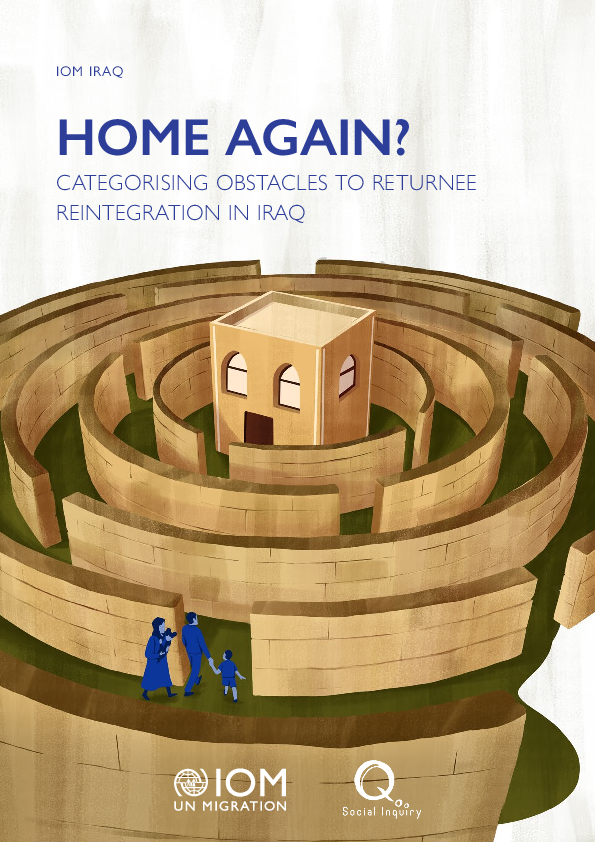
Contact
DTM Iraq, IraqDTM@iom.int
Language
English
Location
Iraq
Snapshot Date
Dec 31 2020
Activity
- Survey
- Return Intention
- Mobility Tracking
- Baseline Assessment
This report examines the prevalence of key obstacles for reintegration that returnee households face in Iraq as of mid-2020. These obstacles are grouped into five main criteria, as follows: safety, security & social relations, access to livelihoods & economic security, documentation, property resitution & compensation and adequate standard of living.
As of December 2020, Iraq has witnessed the return of 4.8 million internally displaced persons (IDPs) to their places of origin in the aftermath of the ISIL conflict. 1 Inter-Agency Standing Committee, IASC Framework on Durable Solutions for Internally Displaced Persons. Expert Group on Refugee and IDP Statistics, International Recommendations on IDP Statistics, background document to fifty-first session of the UN Statistical Commission, 3-6 March 2020. This is a significant returnee population and, while the movement home is a first step toward reintegration, it is not necessarily an indication of longer-term sustainability per se.1 The analysis in this report, by IOM Iraq, the Returns Working Group (RWG), and Social Inquiry, builds upon on and complements previous assessments on durable solutions, mainly with regards to obstacles to return as well as progress toward local integration for IDPs. The focus here is specifically on returnees and obstacles to their sustainable reintegration upon return.

Contact
DTM Iraq, IraqDTM@iom.int
Language
English
Location
Iraq
Period Covered
Jul 01 2022
Sep 30 2022
Activity
- Survey
This pilot project aims at assessing progress towards durable solutions to displacement for internally displaced persons (IDPs) and returnees in Ninewa Governorate of Iraq in order to understand where they stand five years after the end of the 2014-2017 crisis and in which aspects they are still struggling compared to the population who never left their location of origin (‘stayees’). In this respect this project contributes to a broader discussion and Action Agenda around measuring progress towards solutions – and determining the end of displacement – which aims at operationalizing the eight criteria of the Framework for Durable Solutions produced by the Inter-Agency Standing Committee (IASC) and informing targeted interventions in key areas of concern. The analysis of this project builds on the information and knowledge gained by the International Organization for Migration (IOM) about the 2014-2017 crisis. IOM Iraq has been tracking and monitoring IDP stock figures as early as December 2013 through the Displacement Tracking Matrix (DTM). The collection of returnee stock figures began in April 2015, although returnee stock figures have been retroactively reported since October 2014. IOM Iraq also uses the Displacement Index and Return Index as tools to monitor the living conditions of the IDP and returnee populations at the location level across key sectors, such as livelihoods, housing, services, safety, social cohesion and inclusiveness.

Contact
DTM Iraq, IraqDTM@iom.int
Language
English
Location
Iraq
Period Covered
Jun 01 2023
Jun 30 2023
Activity
- Survey
This report on Salah al Din Governorate is an extension of the original pilot project in Ninewa aimed at assessing progress towards durable solutions40 to displacement for internally displaced persons (IDPs) and returnees in the governorates with the largest shares of displaced populations in Iraq. The goal is to understand where IDPs and returnees stand five years after the end of the 2014–2017 crisis and in which aspects they are still struggling compared to the population who never left their location of origin (that is, stayees). In this respect, this project contributes to a broader discussion and Action Agenda around measuring progress towards solutions – and determining the end of displacement – which aims at operationalizing the eight criteria of the Framework for Durable Solutions produced by the Inter Agency Standing Committee (IASC) and informing targeted interventions in key areas of concern.
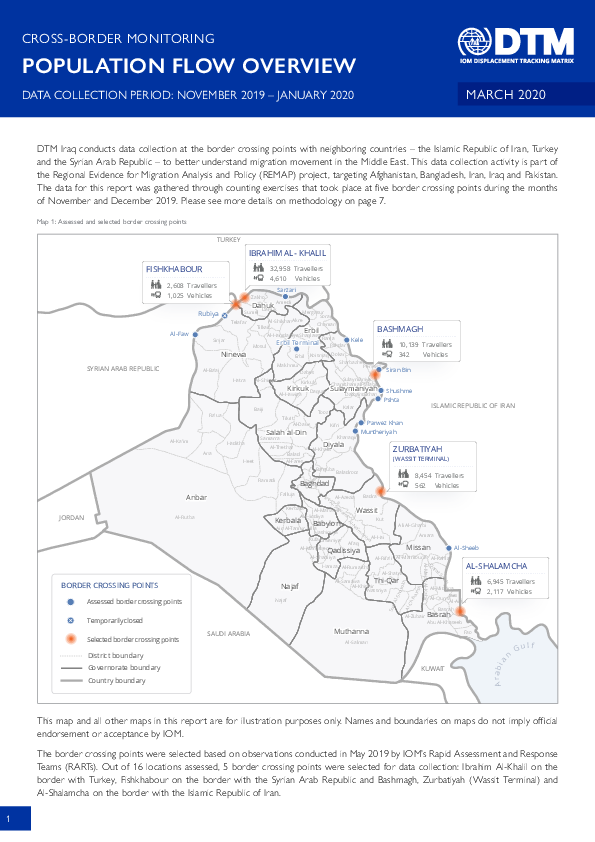
Contact
IraqDTM@iom.int
Language
English
Location
Iraq
Period Covered
Nov 01 2019
Jan 31 2020
Activity
- Survey
- Flow Monitoring
DTM Iraq conducts data collection at the border crossing points with neighboring countries – the Islamic Republic of Iran, Turkey and the Syrian Arab Republic – to better understand migration movement in the Middle East. This data collection activity is part of the Regional Evidence for Migration Analysis and Policy (REMAP) project, targeting Afghanistan, Bangladesh, Iran, Iraq and Pakistan. The data for this report was gathered through counting exercises that took place at five border crossing points during the months of November and December 2019.

Contact
IraqDTM@iom.int
Language
English
Location
Iraq
Period Covered
Jan 01 2020
Feb 29 2020
Activity
- Survey
- Flow Monitoring
DTM Iraq collects data at border crossing points with neighboring countries – the Islamic Republic of Iran (Iran), the Syrian Arab Republic (Syria) and Turkey – to better understand migration movements in the Middle East. Cross-border monitoring is drawn from IOM’s DTM standard methodology designed to capture and describe migration flows, and is part of IOM’s DTM Regional Evidence for Migration Analysis and Policy (REMAP) project, funded by the European Union, which aims to capture and describe migration flows in Afghanistan, Bangladesh, Iran, Iraq and Pakistan. Data displayed in this report was collected at five border point crossings in January and February 2020, employing two different approaches: 1) headcount of all travellers entering or leaving Iraq, and 2) survey of randomly sampled travellers. Border crossing points were selected based on observations conducted in May 2019 by IOM’s Rapid Assessment and Response Teams (RARTs). Out of 16 locations observed, five border crossing points were selected for data collection: Ibrahim Al-Khalil, bordering Turkey, Fishkhabour, bordering Syria, and Bashmagh, Zurbatiyah (Wassit Terminal) and Al-Shalamcha, bordering Iran. Further details on the selection of respondents, survey methodology, and how the border crossing points were selected are available in the Methodological Overview in the last section of this report.
The report presents an overview of the overall movements of travellers observed at any of five selected border crossing points during January and February 2020. It is also focused in more detail on those travellers who are crossing the border for three or more months – they are referred to as migrants and comprise 12 per cent of all recorded travellers. Findings presented in this report relate to socio-demographic characteristics, reasons for travel and mobility history of this category of travellers.

Contact
IraqDTM@iom.int
Language
English
Location
Iraq
Period Covered
Sep 01 2020
Sep 30 2021
Activity
- Survey
- Flow Monitoring
DTM Iraq collects data at border crossing points with neighbouring countries – the Islamic Republic of Iran (Iran), the Syrian Arab Republic (Syria) and Turkey – to better understand migration movements in the Middle East. Cross-border monitoring is designed to capture and describe migration flows, and is part of IOM DTM’s Regional Evidence for Migration Analysis and Policy (REMAP) project, funded by the European Union. The project aims to capture and describe migration flows in Afghanistan, Bangladesh, Iran, Iraq and Pakistan. The United Nations Development Assistance Framework (UNDAF) funded this piece of research.
This report seeks to identify migrants in vulnerable situations entering and departing Iraq who may be susceptible to trafficking in persons and/or other forms of abuse, violence and exploitation along their migratory journey. The aim is to gain a better understanding of the profile of the vulnerable groups, the means of organizing travel, push-factors in the decision-making process, level of risk-awareness and problems encountered during the journey.
Data displayed in this report were collected using two approaches: a headcount of all travellers entering or departing Iraq though the specified border points where DTM have data collection teams stationed and a survey of randomly selected travellers. Data collection took place between 1 September 2020 and 30 September 2021 at five border crossing points: Ibrahim Al-Khalil, bordering Turkey, Fishkhabour, bordering Syria, and Bashmagh, Zurbatiyah (Wassit Terminal) and Al-Shalamcha, bordering Iran. During this period, a total of 14,598 interviews were conducted with randomly selected travellers entering and departing Iraq.
